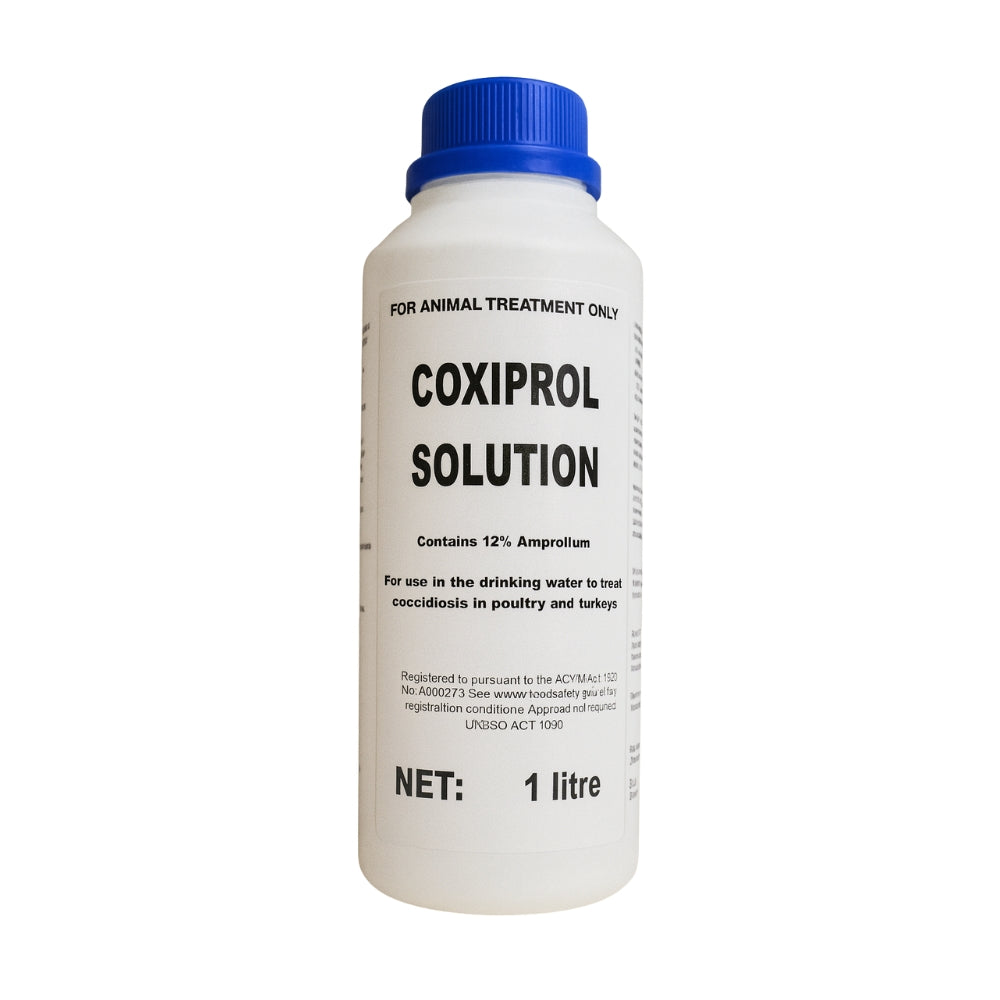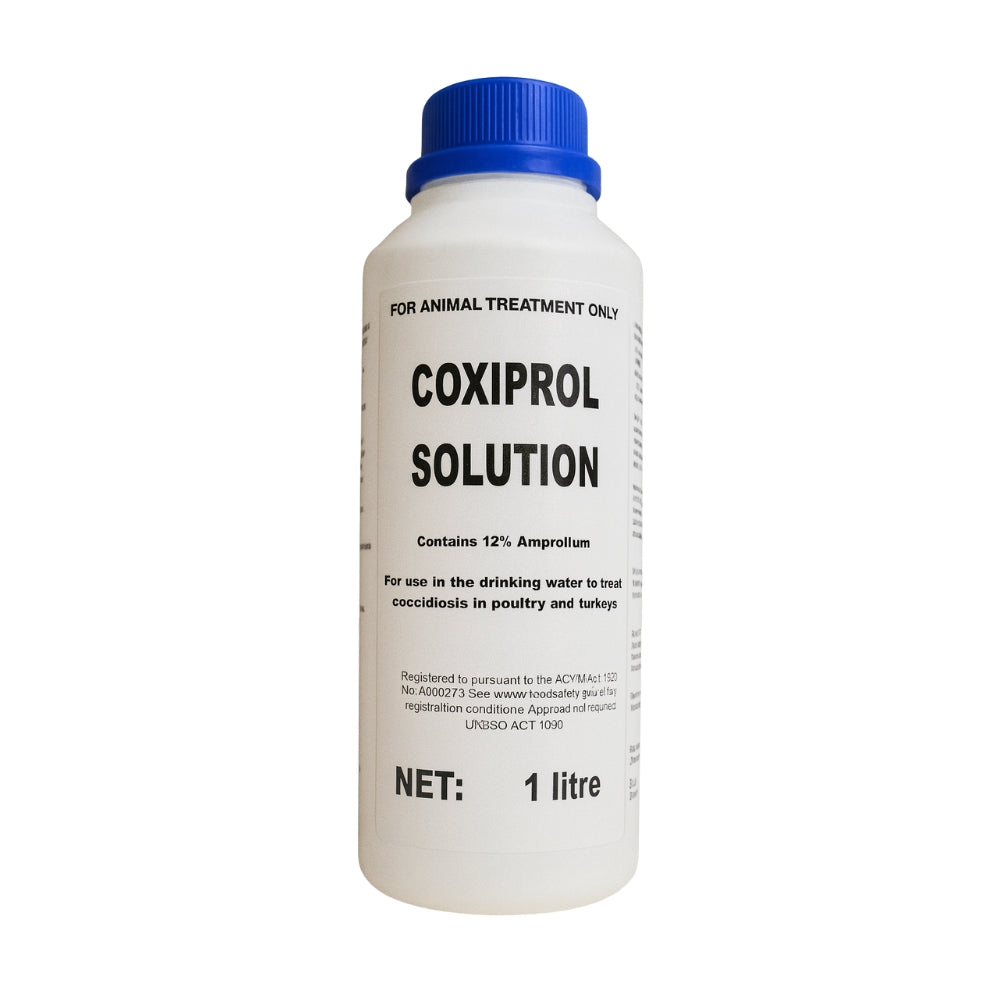
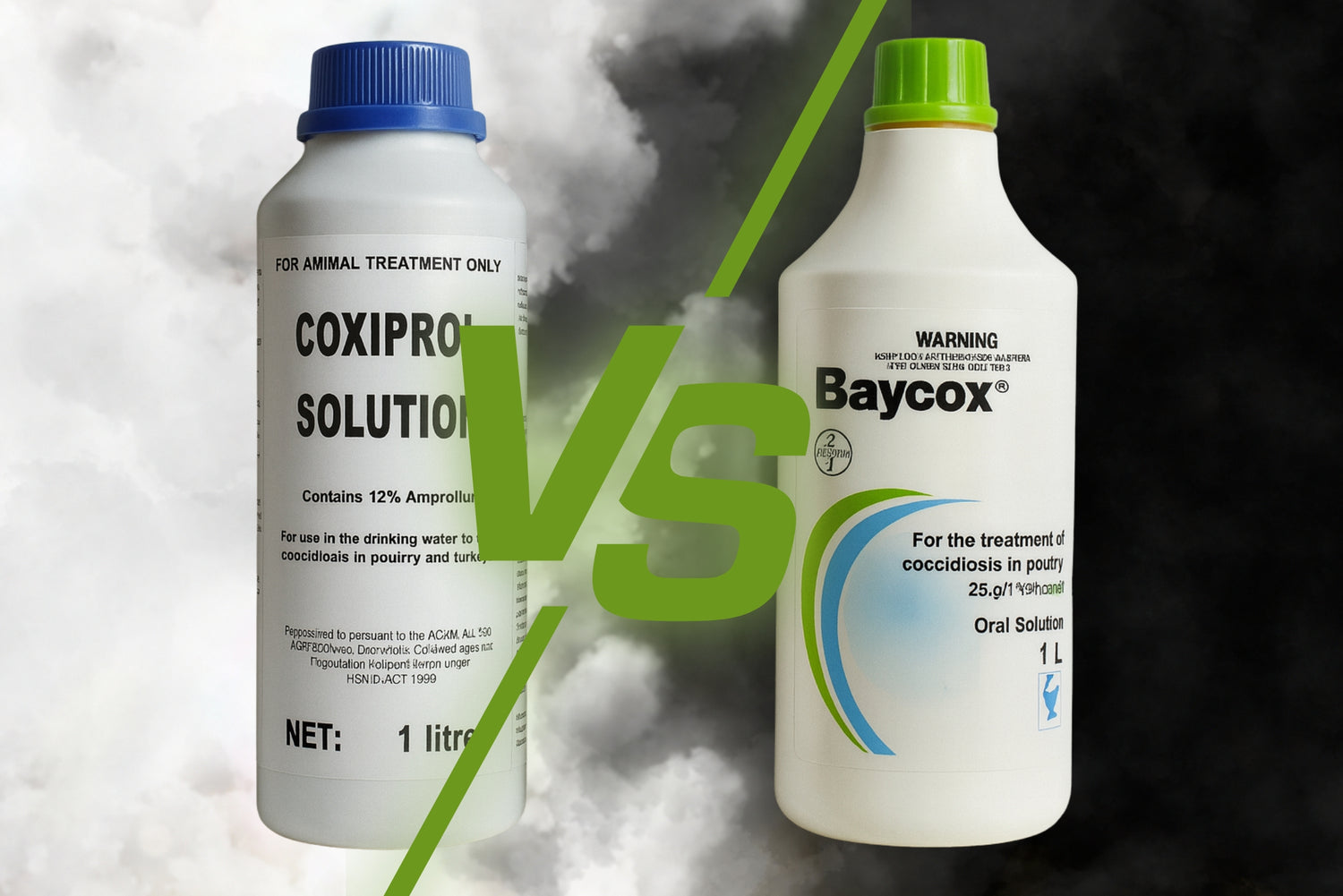
Understanding Coccidiosis in Poultry
Coccidiosis is one of the most common health problems chicken keepers will come across. The important thing to know is that coccidiosis is everywhere, it lives in the soil and droppings, and you can’t get rid of it completely. But that doesn’t mean your flock has to suffer. With good coop management, clean and dry bedding, balanced nutrition, and the smart use of treatments when needed, coccidiosis can be managed so your birds stay healthy and productive. The key is understanding the risk, keeping an eye out for early signs, and acting quickly before it gets out of hand.
What is Coccidiosis
Coccidiosis is a common intestinal disease in chickens and other poultry caused by protozoan parasites of the genus Eimeria. These parasites invade the gut lining, where they multiply and damage the intestinal cells. The result is poor nutrient absorption, pain and inflammation, diarrhoea (sometimes with blood), weight loss, weakness, and in severe cases, death.
While young birds are the most vulnerable, older birds can also develop disease if their immune systems are stressed, for example, during the start of lay, moulting, heat stress, overcrowding, or poor nutrition. The parasite spreads easily through droppings, and even mild infections can slow growth and reduce egg production.
Good hygiene, balanced nutrition, and the strategic use of anticoccidial treatments (such as amprolium or toltrazuril) are key to controlling outbreaks.
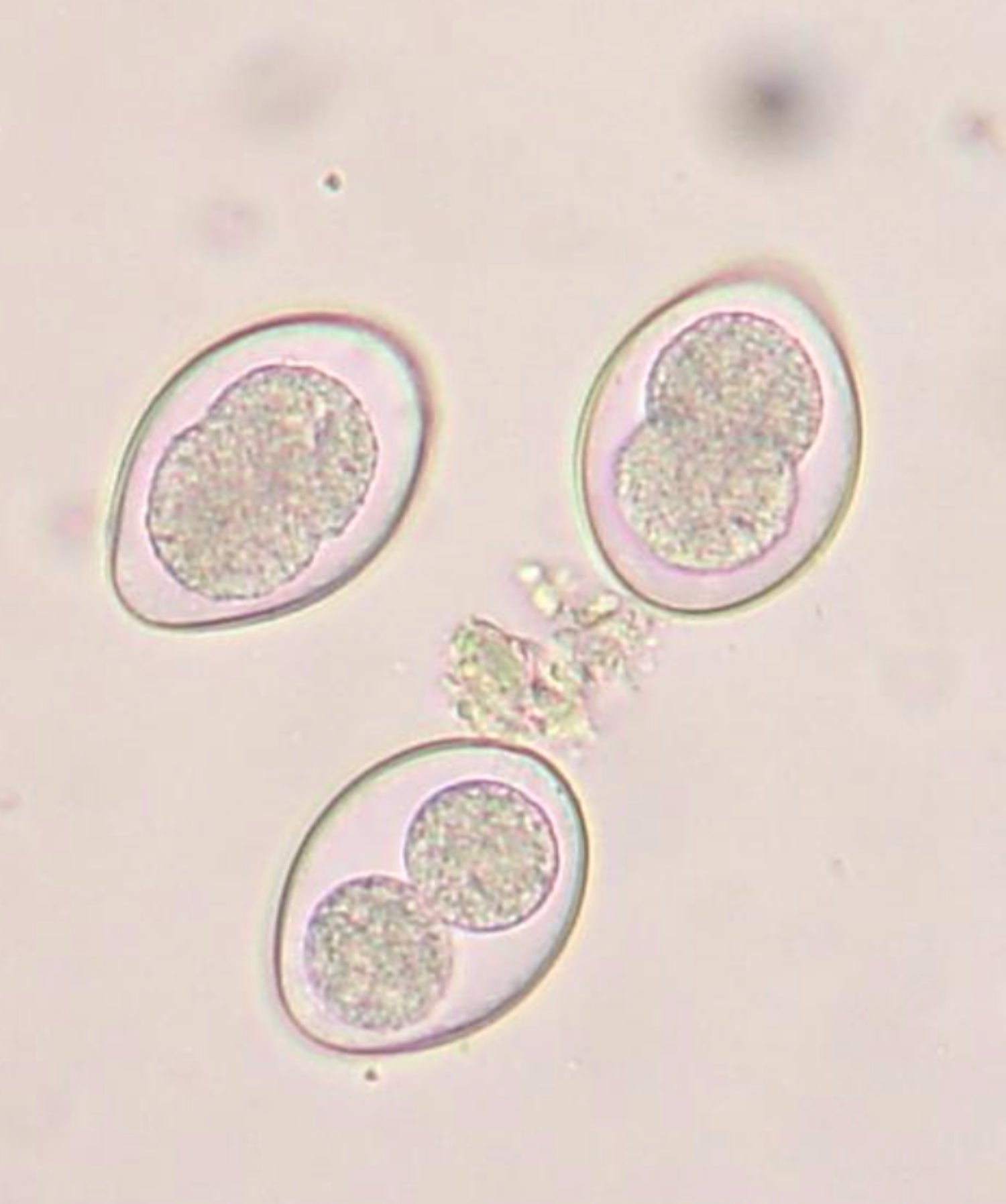
Eimeria Species in Poultry
- E. tenella
- E. acervulina
- E. maxima
- E. necatrix
- E. brunetti
- E. mitis, E. praecox, E. mivati
Medications
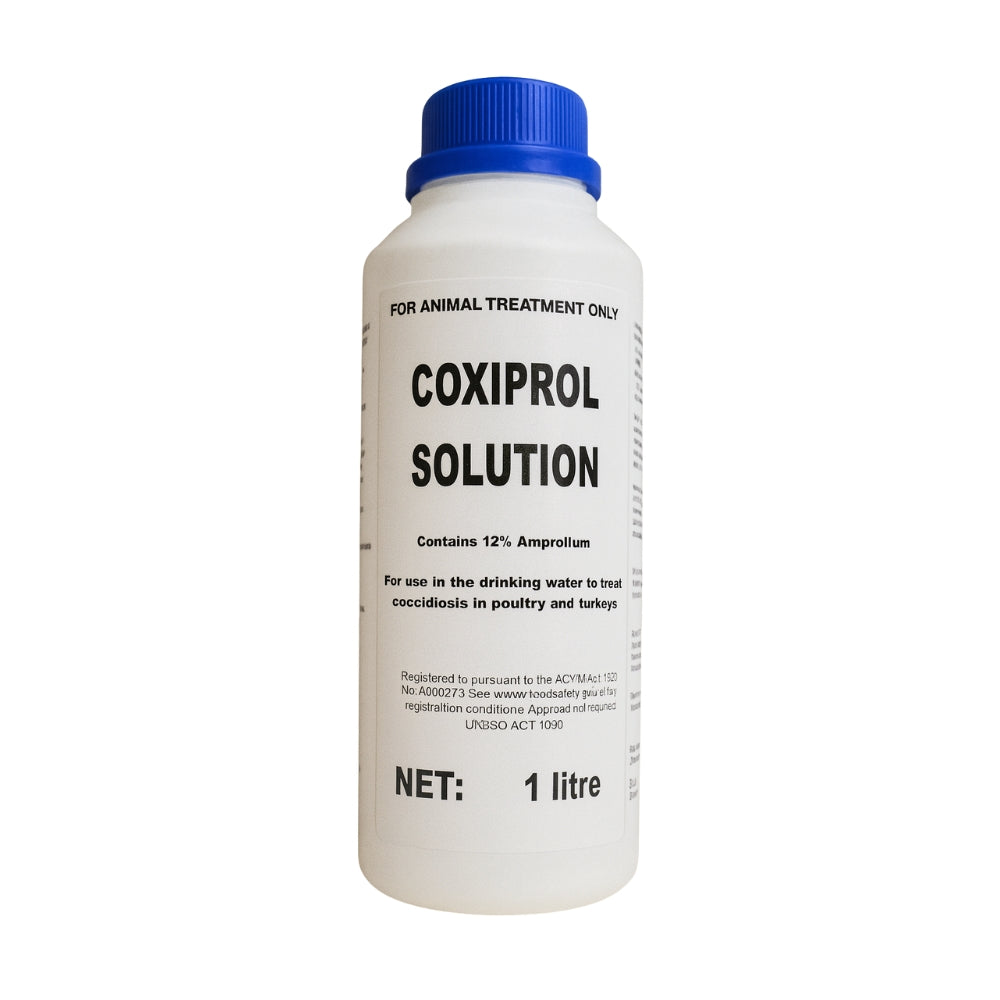
Amprolium
Trade names: Coxiprol®
Active: Amprolium
Dose:
- Severe outbreak: Add 40 mL Coxiprol per 20 L drinking water.
- Moderate outbreak: Add 20 mL Coxiprol per 20 L drinking water.
- Follow-up / prevention: Add 10 mL Coxiprol per 20 L drinking water.
Give for 5–7 days at either the 40 mL/20 L (severe) or 20 mL/20 L (moderate) dose.
Follow with 7–14 days at the 10 mL/20 L dose to reduce recurrence and allow immunity development.
Mode of action: Thiamine analogue; competes with vitamin B1 uptake, starving the parasite.
Use case: Early or mild infections; safe for young chicks and layers. Allows birds to develop immunity while reducing symptoms.
Withholding: 10 egg and 5 meat withholding required in New Zealand.
Pros: Gentle, low risk of resistance. Can be used to spot treat issues as needed.
Cons: Less effective against severe infections or established infestations.
Contraindications:
- Vitamin B1 (thiamine) supplements.
- Other anticoccidials (e.g. toltrazuril, ionophores)
- Medications mixed into the same drinking water (unless vet-directed)
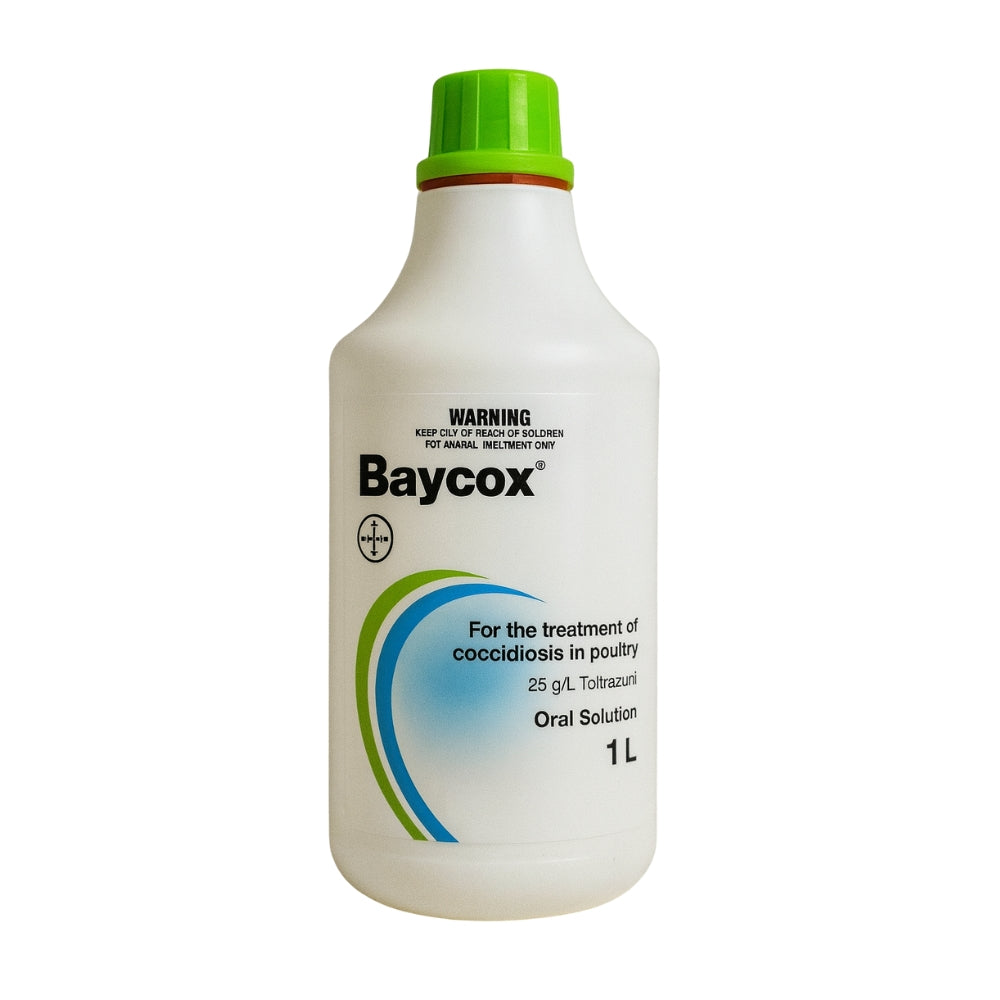
Toltrazuril
Trade names: Baycox®, Toltravet®
Active: Toltrazuril
Dose: Always read and follow the product label before use.
- Standard dose: 7 mg toltrazuril per kg of live bodyweight, given for 2 consecutive days.
Mode of action: Interferes with multiple stages of the coccidia life cycle, damaging intracellular development and preventing further replication.
Use case: Effective for both early and advanced infections. Commonly used in outbreaks where birds show moderate to severe symptoms. Safe for chicks, growers, and layers when used correctly.
Withholding (NZ): 14 days for meat; no egg withholding period currently registered, so not recommended for laying hens producing eggs for human consumption.
Pros: Highly effective, even against severe infestations. Targets all intracellular stages, reducing reinfection cycles.
Cons: Does not allow birds to build natural immunity, so reinfection can occur after treatment. More expensive than some alternatives.
Contraindications:
- Other anticoccidials (e.g. Amprolium, ionophores)
- Medications mixed in the same drinking water (unless vet-directed)
- Prolonged repeat courses (overuse may increase resistance risk)
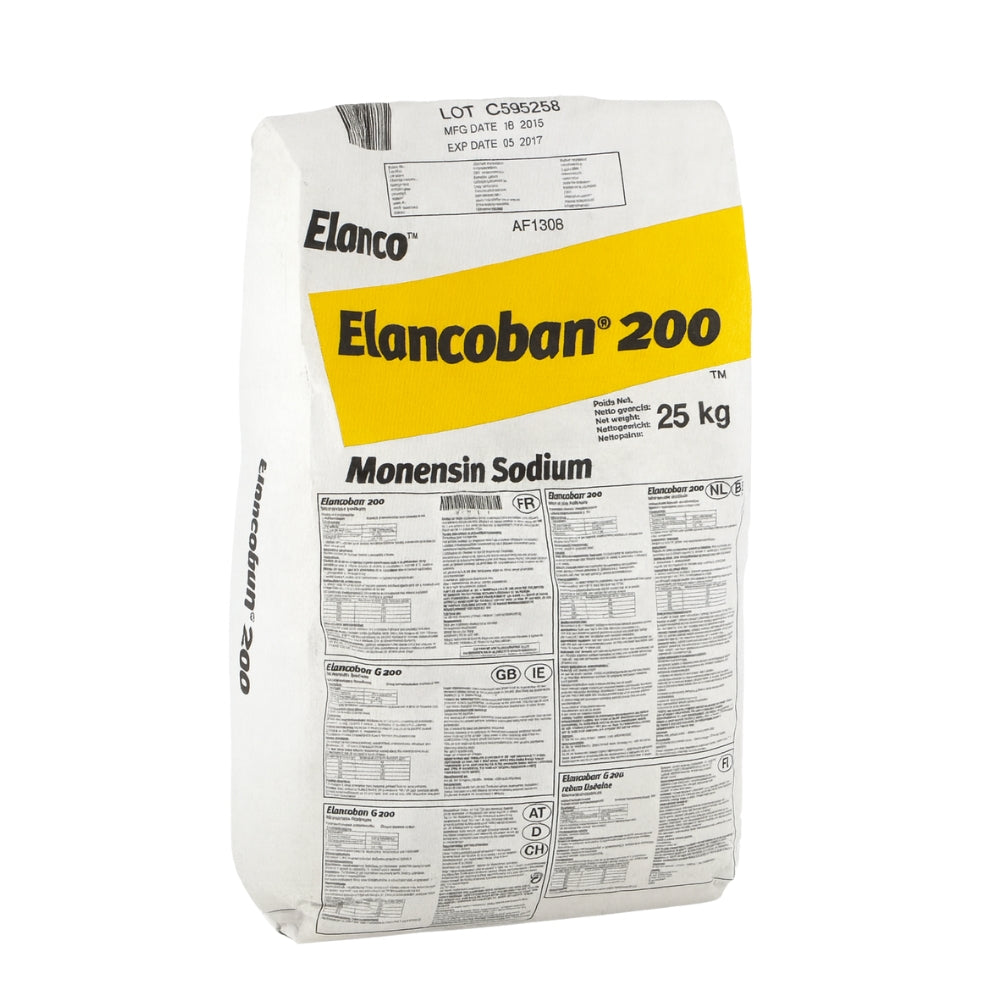
Ionophores
Trade names: Coxistac®, Avatec®, Monteban®, Elancoban®
Active: Salinomycin, Lasalocid, Narasin, Monensin (ionophore group)
Dose: Always read and follow the product label before use. Typically included in feed at 60–125 ppm depending on the ionophore and bird age.
Mode of action: Disrupts ion transport across coccidia cell membranes, causing an imbalance in sodium and potassium that leads to parasite death.
Use case: Used as a preventative in feed, from day-old chicks through grow-out. Allows controlled exposure to coccidia so birds build natural immunity while preventing clinical disease.
Withholding (NZ): Varies by product (usually 5 days for meat; not for use in laying hens producing eggs for human consumption).
Pros: Effective for prevention; low risk of resistance when used in rotation programmes; supports immunity development.
Cons: Not effective as a treatment once severe infection is established; toxic to some bird species (e.g. turkeys, pigeons, parrots); dangerous if fed with certain antibiotics (e.g. tiamulin).
Tiamulin antibiotics (e.g. Denagard®) highly toxic interaction, can cause deaths.
Contraindications:
- Other macrolide antibiotics (erythromycin, oleandomycin, etc.) → risk of severe toxicity.
- Other anticoccidials (e.g. Amprolium, Toltrazuril) unless under strict vet direction.
- Non-target species (turkeys, pigeons, parrots, dogs, horses) ionophores are toxic to them.
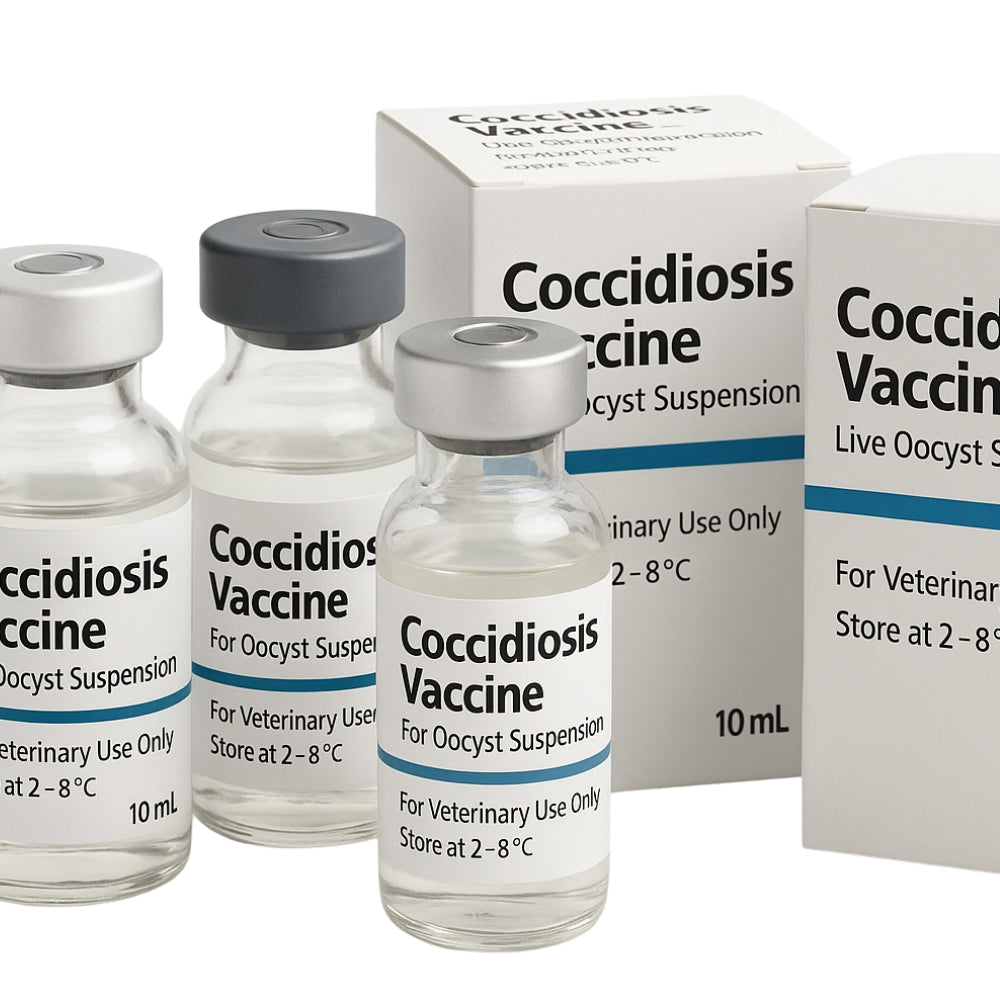
Coccidiosis Vaccine
Trade names: Paracox®, HatchPak Cocci III®, Livacox® (availability varies by country)
Active: Live attenuated or non-attenuated Eimeria species (e.g. E. acervulina, E. maxima, E. tenella, etc.)
Dose: Always read and follow the product label before use. Usually administered to day-old chicks via spray in the hatchery, in drinking water, or applied to feed. One dose provides controlled exposure to multiple Eimeria species.
Mode of action: Exposes birds to low, controlled levels of live Eimeria oocysts. This stimulates the bird’s immune system to build protective, lifelong immunity against coccidiosis.
Use case: Best suited to breeders, layers, and some broiler programmes where long-term immunity is desired. Works as a preventative, not a treatment, and requires good litter management to allow recycling of oocysts.
Withholding (NZ): No withholding period for meat or eggs.
Pros: Builds lasting natural immunity; reduces reliance on chemical anticoccidials; no residues in meat or eggs; can be used in rotation with ionophores/chemicals to manage resistance.
Cons: Requires careful handling, storage, and uniform administration; immunity takes time to develop; early post-vaccination performance may dip slightly as immunity builds; less effective if litter conditions do not support oocyst cycling.
Contraindications:
- Do not use alongside anticoccidial drugs (Amprolium, Toltrazuril, Ionophores), as these will kill the vaccine organisms and prevent immunity from developing.
- Avoid disinfectants or management practices that eliminate all oocyst cycling immediately after vaccination.
- Requires trained staff to ensure correct dosing at the hatchery or farm level.
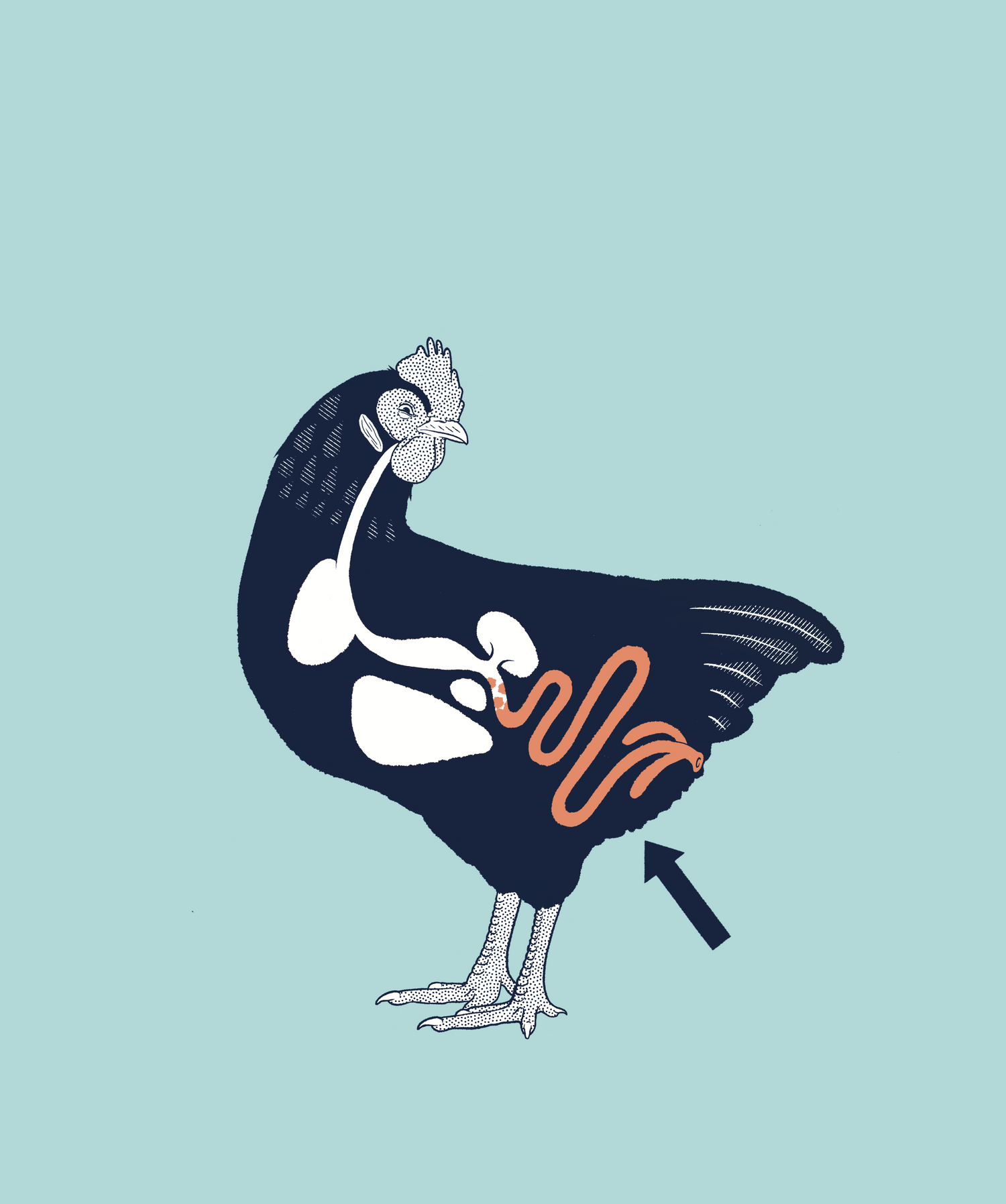
What Happens if Coccidiosis is Left Untreated?
If coccidiosis is not recognised and managed quickly, the damage to the gut lining can open the door to even more serious problems:
Enteritis
- Enteritis means inflammation of the intestine.
- When coccidia damage the gut wall, it becomes irritated, swollen, and less able to absorb nutrients.
- Birds show watery diarrhoea, weight loss, and general poor condition.
Necrotic Enteritis
- In some cases, the damage caused by coccidia allows harmful bacteria (especially Clostridium perfringens) to overgrow in the gut.
- This leads to necrotic enteritis, where sections of the intestine actually die off (necrosis).
- Birds may develop sudden, severe diarrhoea, depression, and rapid death.
- Even survivors often suffer long-term poor growth, reduced egg production, and ongoing digestive problems.
Bottom line: Treating coccidiosis promptly is critical, not only to stop the parasite itself, but also to prevent these dangerous secondary gut diseases.

Managing and Preventing Coccidiosis in
Managing Coccidiosis in Your Backyard Flock
Coccidiosis is very common in chickens and spreads quickly through droppings, especially when litter is damp or birds are stressed. The goal isn’t to eliminate it completely (that’s impossible), but to keep parasite numbers low so your birds build natural immunity without getting sick.
1. Keep the environment dry and clean
- Wet litter is the biggest risk — fix leaks, raise drinkers so they don’t spill, and clean up soggy bedding.
- Do a full coop clean-out once or twice a year, and top up bedding regularly in between.
- Don’t overcrowd: too many birds means more droppings and more spread.
2. Support bird health
- Feed a complete poultry ration, not just scraps or grains, to build strong immunity.
- Make sure all birds can reach food and water without competing.
- Reduce stress at key times (chick brooding, moulting, hot weather, start of lay) with good housing and nutrition.
3. Use medicines when needed
If you see bloody or watery droppings, hunched chicks, or sudden deaths, treat straight away.
- Amprolium is gentler and safe for young chicks and layers.
- Toltrazuril is stronger for severe cases.
Always follow dosing instructions carefully, and remember egg and meat withholding times.
4. Extra gut support
- Provide balanced, complete diet to optimise immunity and gut health.
- Medium-chain fatty acids (MCFAs): support gut health, reduce pathogenic bacteria, and can indirectly help control secondary enteritis.
- Water acidification: lowers pH, improving gut environment and reducing oocyst sporulation and bacterial overgrowth.
- Probiotics & competitive exclusion products: help restore and maintain a healthy gut microbiota, reducing the impact of coccidial damage.
5. Prevent spread
- Keep wild birds, rodents, and visitors’ dirty boots out of the coop.
- Don’t mix very young chicks with older birds until they’ve built immunity.
6. Keep notes
Record any outbreaks and what you used to treat them, this will help if it happens again.
Summary
Coccidiosis can’t be completely prevented, but it can be well managed. It’s common in poultry, yet it doesn’t have to cause major losses. With good coop management, balanced nutrition, biosecurity, and the careful use of medications or vaccines, outbreaks can be reduced and flocks kept healthy and productive. Regular monitoring and quick action are key — managing the risk early is always easier than dealing with a severe outbreak.
Image Holdaings Ltd
Coxiprol
Share
